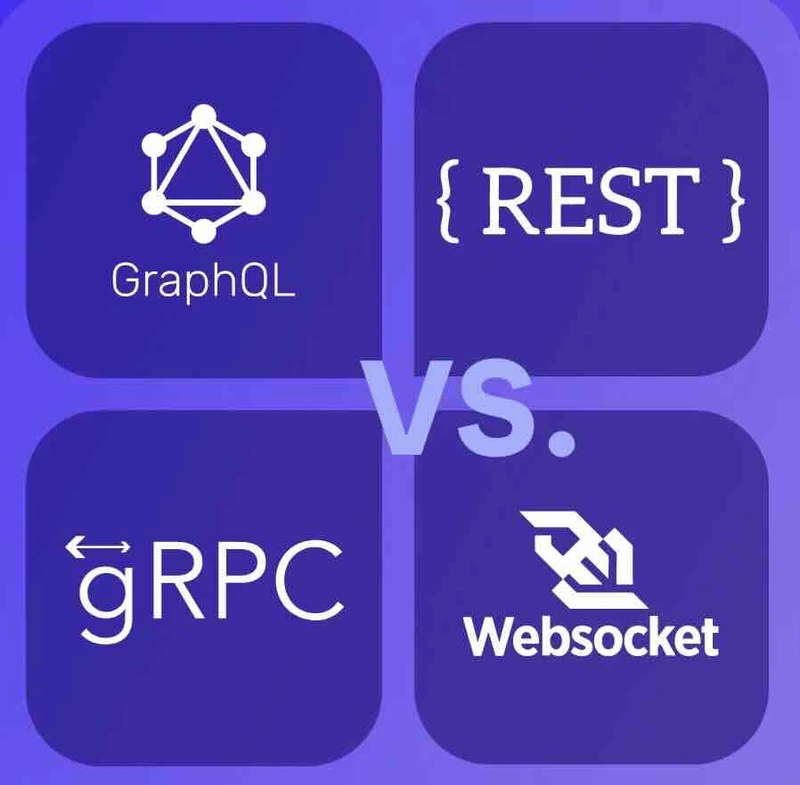gRPC vs REST API: A Deep Technical Comparison
gRPC vs REST API

gRPC vs REST API: A Deep Technical Comparison
In the evolving landscape of distributed systems and microservices, API design and communication protocols are foundational. Two popular paradigms dominate this space: gRPC and REST APIs. While REST is a mature, widely adopted standard, gRPC (Google Remote Procedure Call) is gaining momentum for its performance and type safety in microservices architectures.
This article dives deep into the technical architecture, use cases, strengths, and weaknesses of both gRPC and REST APIs.
Overview
FeaturegRPCREST APIProtocolHTTP/2HTTP/1.1 (typically)Message FormatProtocol Buffers (Protobuf) (binary)JSON (text)Interface Definition.proto filesOpenAPI / Swagger / manually definedStreamingBidirectional and client/server streamingOnly via polling or WebSocketsLanguage SupportMany (official and third-party support)All HTTP-capable languagesPerformanceHigh (low latency, small payloads)Moderate to low, especially over mobileHuman ReadabilityLowHigh
gRPC: Deep Dive
gRPC is a high-performance, open-source universal RPC framework developed by Google. It uses Protocol Buffers (Protobuf) for message serialization and supports HTTP/2 for transport.
Key Technical Features
- Protocol Buffers (Protobuf): Compact binary serialization format that supports schema evolution.
- HTTP/2 Transport: Enables multiplexing (multiple streams over one TCP connection), server push, and built-in support for streaming.
- Strong Typing & Code Generation: Uses
.protofiles to define services and messages; automatically generates client and server stubs in multiple languages. - Bi-directional Streaming: Allows both client and server to send data streams concurrently.
- Deadlines and Timeouts: Clients can set deadlines that are enforced throughout the call chain.
- Built-in Authentication: Supports SSL/TLS and token-based authentication mechanisms.
Example gRPC Workflow
protobuf
CopyEdit
// service.proto
syntax = "proto3";
service Greeter {
rpc SayHello (HelloRequest) returns (HelloReply);
}
message HelloRequest {
string name = 1;
}
message HelloReply {
string message = 1;
}
This definition is used to generate client and server code in languages like Go, Python, Java, etc.
REST API: Deep Dive
REST (Representational State Transfer) is an architectural style for designing networked applications. It is based on standard HTTP methods (GET, POST, PUT, DELETE) and stateless client-server communication.
Key Technical Features
- Resource-Based: Interacts with resources identified by URIs (
/users/123). - Text-Based Formats: Primarily JSON or XML; easily readable and debuggable.
- Stateless Communication: Every request contains all the information necessary for the server to understand it.
- Caching: Leverages HTTP caching semantics (
Cache-Control,ETag, etc.). - Widespread Tooling: Natively supported by browsers, curl, Postman, and almost every web framework.
Example REST API Endpoint
bash CopyEdit GET /api/users/123
Returns:
json
CopyEdit
{
"id": 123,
"name": "Alice",
"email": "alice@example.com"
}
Use Cases
gRPC Use Cases
- Microservices Communication: Especially in performance-sensitive environments with many internal services.
- Streaming Services: Real-time data feeds like stock quotes, chat systems, or telemetry.
- Mobile & IoT Applications: Where bandwidth and latency matter (due to compact Protobuf messages).
- Polyglot Environments: Unified schema with code generation across multiple languages.
REST API Use Cases
- Public APIs: Because of its human readability and ease of use by third parties.
- Web Applications: Easily integrated into frontend frameworks (React, Angular).
- Prototyping and Rapid Development: Faster setup without requiring
.protodefinitions and compilation. - Backward Compatibility: Easier for versioning and maintaining older endpoints.
Performance Comparison
OperationgRPCREST APILatencyLowModerate to HighPayload SizeSmall (binary)Larger (text-based)ThroughputHighModerateCompressionBuilt-in with HTTP/2Manual or optionalStreaming SupportFullPoor (unless WebSocket)
Advantages and Disadvantages
gRPC
Advantages:
- Superior performance with HTTP/2 and Protobuf.
- Strongly typed contracts with auto-generated code.
- Native streaming support.
- Efficient for internal microservices.
- Language agnostic with unified contract via
.proto.
Disadvantages:
- Not human-readable (difficult to debug without tools).
- Steeper learning curve.
- Browser support is limited (requires gRPC-Web or a proxy).
- Overhead of schema management and code generation.
REST API
Advantages:
- Simplicity and readability (JSON, HTTP).
- Universally supported and understood.
- Excellent for public-facing APIs.
- Easy to test with standard tools.
Disadvantages:
- Performance overhead (HTTP/1.1, verbose payloads).
- No built-in streaming (requires workarounds).
- Weakly typed – relies on documentation and conventions.
- Verbosity increases with complex data structures.
gRPC vs REST: When to Use Which?
ScenarioRecommended ApproachInternal microservice communicationgRPCPublic-facing APIsRESTReal-time bidirectional streaminggRPCMobile clients with low bandwidthgRPCThird-party developer integrationRESTQuick MVP or prototypeRESTPolyglot services with strict contractsgRPC
Conclusion
Both gRPC and REST APIs serve critical roles in modern application architectures. REST, with its simplicity and universality, remains ideal for many external and public APIs. gRPC, on the other hand, shines in high-performance, internal microservice ecosystems where type safety, efficiency, and streaming are essential.
The best choice often depends on your system requirements, team expertise, and infrastructure capabilities. In many cases, a hybrid approach using REST for external communication and gRPC for internal service-to-service calls can offer the best of both worlds.
